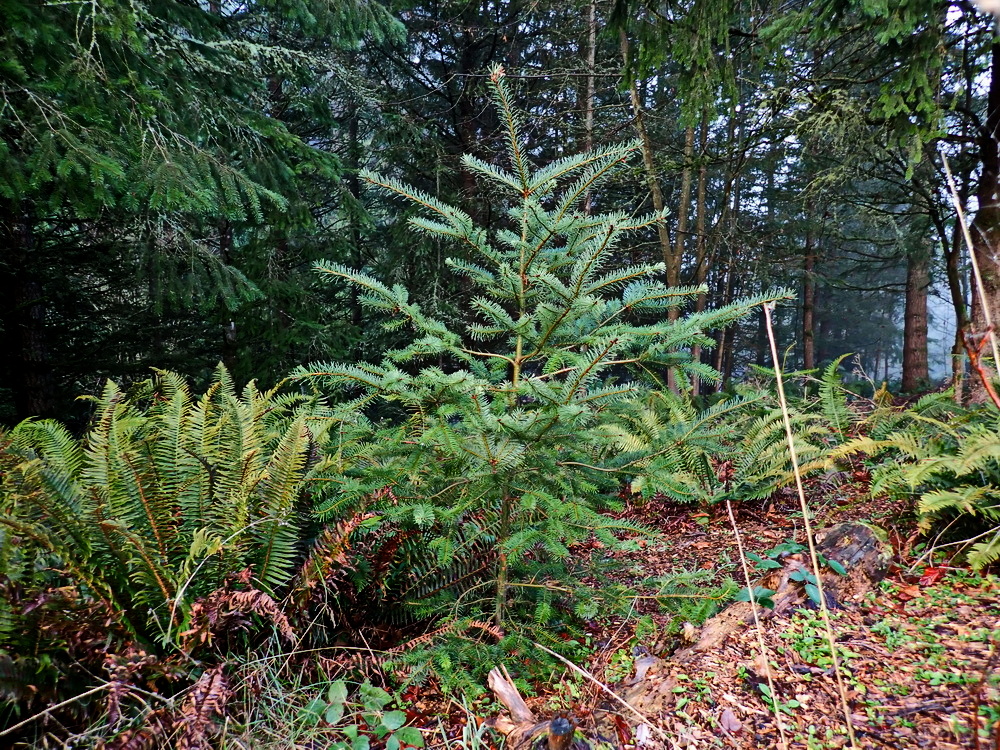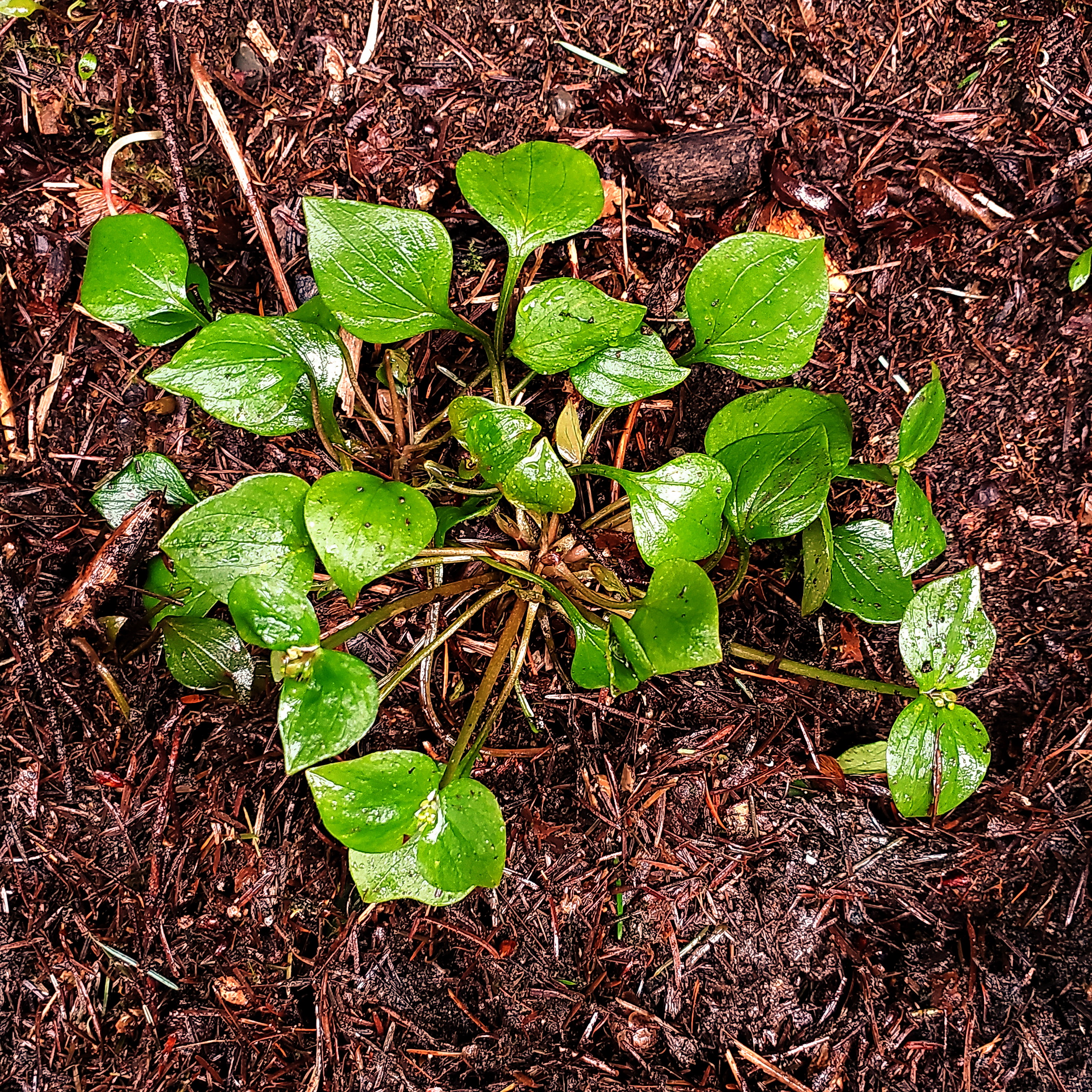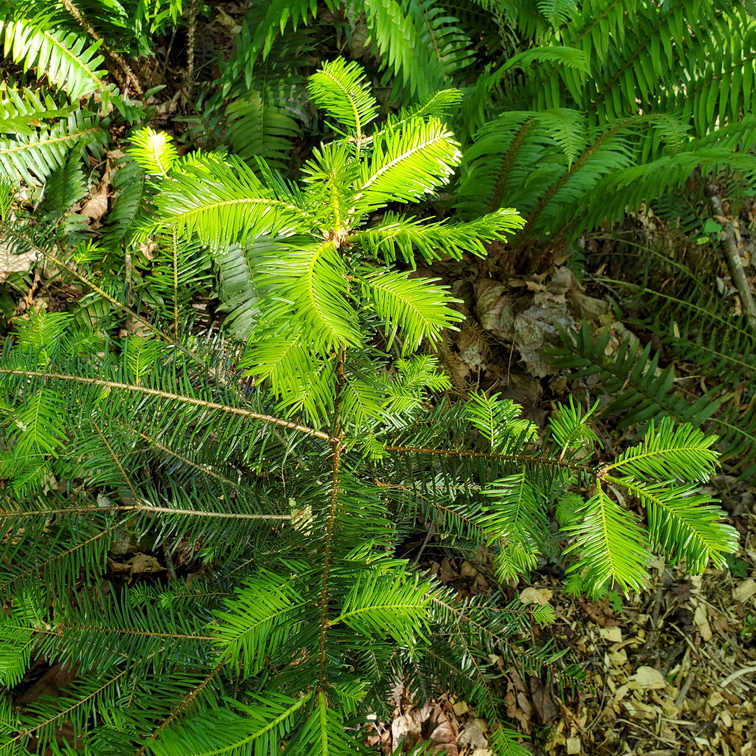Category: Forest Restoration Techniques
-

The Hazard of Overclearing
A recent post in Weeds of the Northwest asked how best to clear a 400 square-foot patch of vinca. The question struck a chord with me because of the hard lessons I have learned in Everett’s Forest Park about the hazard of overclearing. Yes, there are various methods used for clearing large areas of weeds,…
-

Green Everett Partnership’s Successes and Failures in Everett’s Forest Park
It has been over one year since the Green Everett Partnership’s decade-long restoration project in Everett’s Forest Park came to an end, and it is instructive to walk the park now, and see which efforts are having a lasting impact.
-

The Nipplewort Dilemma
Is it time to make my peace with Nipplewort and its ilk?
-

Does Sheet Mulching Deter the Natural Regeneration of Native Groundcovers?
Does sheet mulching with wood chips deter the natural regeneration of native groundcovers?
-

Weeds of the Turf Next to Our Backyard Forests
Our backyard forests often lie next to areas of turf that receive no irrigation or chemical inputs and inconsistent mowing. These “input-free” turf areas provide ample opportunity for colonization by a host of plants that are not welcome in the forest. The main line of defense against the spread of these weeds are the Bradley…
-

A Critique of the Forterra Model of Forest Restoration for Everett’s Forest Park
Now that Forterra has decided to essentially end its on-the-ground involvement in the Green Everett Partnership, I feel more at liberty to criticize its urban forest restoration model as it was applied in Everett’s Forest Park. The model’s failure, I believe, stems from the basic mismatch between the amount and type of labor needed to…
-

Clootie’s Crofts
Recently, I’ve been pondering some of the practical, ecological, and even philosophical reasons that I should begin to make peace with some of the weeds in some of the places.
-

Should We Still be Planting Native Trees?
I knew that because of climate change there were no longer any perfect native trees to plant in our region, but I thought that planting a mix of native trees in appropriate sites was a reasonable climate adaptive strategy. Recently, however, my confidence was shaken by a list suggesting that our most important native conifers…
-
Blackberry Bradley Line
Late fall seems to find me in a wetland untangling Himalayan Blackberry from Salmonberry. Most recently I was working on maintaining and extending a Bradley Line that protects an area of Salmonberry and Black Twinberry from old-growth Himalayan Blackberry (Rubus armeniacus).
-
Climate Change in the Puget Lowlands
This year’s extreme dry season is almost surely related to climate change and comes as yet another warning that we’ve got to change some of our forest restoration practices.
-
Marking Future Transplants During the Dry Season
The dry season is a good time to look for sapling trees, shrubs, and small forbs growing in weedy areas or in spots too close to trails and marking them to transplant later when the wet season returns.
-
Weeding – The Essence of Backyard Forest Restoration
Recently, bending over to remove an Herb Robert from a patch of Bleeding Heart, it occurred to me that hand weeding is the very essence of backyard forest restoration — at least for idealists like myself who are trying to achieve ground covers and shrub layers comprised almost solely of native plants. Weeding can be…
-
Weed Whacking Bad Edges — Some Pros and Cons
Last year, I began weed whacking a few “bad edges” to see if it would help prevent the weeds from recolonizing adjacent “good areas.” I have some preliminary opinions on some pros and cons of this practice.
-

Should We Plant Conifers in Our Backyard Forests?
Should we be planting conifers in our backyard forests to eventually replace the existing large trees?
-
Trailing Blackberry X Himalayan Blackberry Hybrids
Does the native Trailing Blackberry hybridize with the invasive Himalayan Blackberry, and if so, what does this mean for backyard forest restoration?
-
The Useful Garden Fork
The garden fork is a useful tool for loosening soil prior to removing invasive plants and for planting natives.
-

The Bradley Method
Published in Australia in 2002, “Bringing Back the Bush – The Bradley Method of Bush Regeneration” encapsulates the principles and methods developed by sisters Eileen and Joan Bradley based on their years of work restoring portions of a natural area in Sydney.
-

Fire Ladders and Douglas Firs
Though wildfires are rare in Puget Lowland forests, when they do occur mature Douglas Fir trees can be killed if fire reaches their crowns. One way this can happen is through “fire ladders,” which can be prevented by pruning the lower branches of Western Redcedars and Western Hemlocks.
-

Hedera Etcetera, Part Two
In terms of controlling erosion, is it better to allow existing blankets of “Seattle’s worst weed” to remain on steep slopes?
-

Mosses and Lichens
In the Puget Lowlands, mosses and lichens add to the beauty of our backyard forests, and now, saturated with moisture from the fall rain they have awakened from their dry-season dormancy.